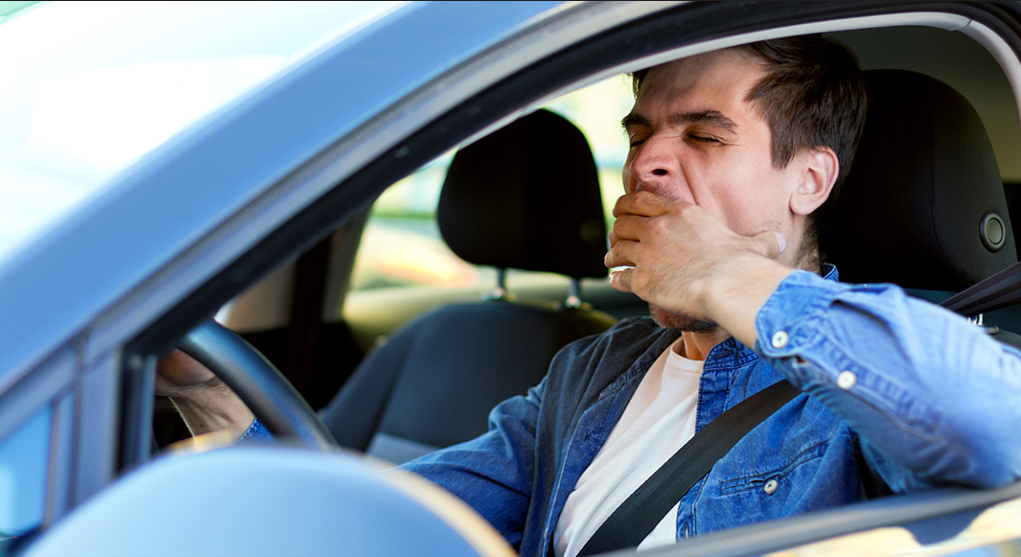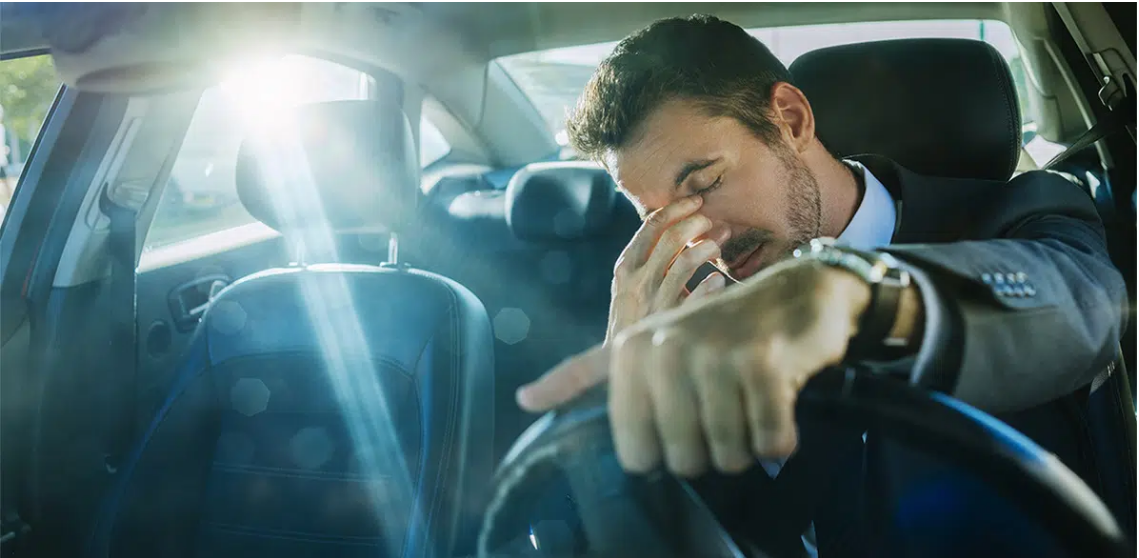Driver Fatigue Detection Systems: How Does Anti-Sleep Tech Work? Because nodding off while driving can have disastrous effects, several manufacturers now include equipment that can prevent drivers from dozing off while behind the wheel.
There is always going to be some amount of risk involved in driving a vehicle that weighs several tons and travels at scary speeds, regardless of how safe automobiles have evolved over the years.
And although while you might believe it’s impossible to nod off while doing something so nerve-wracking, it really happens more frequently than you might think it does.

If you’re delayed in traffic and find yourself starting to drift off behind the wheel, there are a lot of things you can do to keep yourself alert, but manufacturers have also come to the party with some innovative technology that can really determine if you’re feeling drowsy behind the wheel.
The ability to detect drowsiness in drivers is becoming ever more widespread, but how do these technologies actually function?
A Definition: Drowsy Driver Detection
The modern fatigue-detection systems installed in vehicles make use of a variety of monitoring techniques to ascertain whether or not a driver is beginning to nod off or is having difficulty paying attention.
These sleep-detection systems make use of sensors and cameras to perform frequent scans of the driver, during which they look for prolonged eye blinking and take note of any significant shifts in the driver’s head posture. These are sometimes connected to sensors located outside the vehicle that monitor whether or not you are straying outside of your lane or responding too slowly.
Anti-sleep alarms will be activated in the event that one or more of these issues are found, and they will make an effort to get your attention. This can be accomplished by the use of audible alerts, a vibrating steering wheel, or even a vibrating driver’s seat, provided that the automobile is fitted with the appropriate safety seat technology.
It is important to emphasize that these technologies in no way provide an alibi for sleepy driving, nor do they take control of the car in the event that the driver does nod off behind the wheel. During lengthy journeys, it is not their responsibility to keep you awake; rather, it is their role to alert you when you need a break or some time to properly relax.
After receiving just one warning, you should immediately begin looking for a location where it is safe to pull over, stretch, and get your heart rate up. You should probably also keep an eye out for a hotel or motel where you can grab some shut-eye for a few hours.
What Is The Sleep-Detection System On My Car Called?
It’s easy to be overwhelmed by the long list of amenities that come standard on your brand-new vehicle. If you want to check this box on the options list when you’re purchasing a new vehicle, you’ll need to be familiar with the names that some of the most well-known companies give to this particular piece of technology.
Some automakers package sleep-detection systems in cars with other features and give them distinct names. The majority of features have names that explain what they do, such as driver attention warning, tiredness monitoring, and others. However, some manufacturers bundle these systems together. For example, the technology is tucked away in the Driver Assist package that can be purchased for the vast majority of Audi cars.
The following are some of the most prevalent technologies that detect sleepy driving that you should be aware of, as well as some of the most recent models that you may anticipate finding them in:
- GM and Cadillac’s Super Cruise makes use of FOVIO driver monitoring technology to determine whether or not the driver is becoming fatigued. While the moniker “Super Cruise” refers to the suite of driver assistance technologies, the word “Super Cruise” itself refers to the suite. It is offered on the Escalade model of the Cadillac.
- Volvo’s Driver Alert Control (DAC): The Swedish carmaker was in the forefront of this technology and released DAC in 2007 to make the driver aware when they drive less consistently and get distracted as a result of fatigue. DAC was designed to prevent accidents. The most recent iteration of this technology is now offered across the board, even in the Volvo XC90, the most premium SUV in the series.
- Attention Assist, Offered by Mercedes-Benz Because identifying signs of driver exhaustion is critical not just in passenger automobiles but also in commercial automobiles, Mercedes has made Attention Assist accessible in all of their most recent models, including both passenger and cargo vans.
- An attention assistant and a driver attention camera are utilized within the Driving Assistant suite of the Active Protection System of BMW. Their purpose is to determine whether or not the driver is experiencing signs of tiredness, such as erratic movement. Cars like the BMW 7 Series are equipped by default with a technology called Fatigue and Focus Alert.
- EyeSight Driver Assist from Subaru is a complete suite of safety assistance that monitors how your car behaves and can notify you if you drift outside of your lane. EyeSight Driver Assist comes standard on all new Subaru vehicles. Every new Subaru model is equipped with the technology as standard, including the Outback, Forester, and Crosstrek.

After-Market Drowsiness Detection Options
The bar for vehicle safety has been raised to an all-time high, and because manufacturers are striving for their customers’ favor, most contemporary vehicles are fully equipped with various forms of safety technology.
If your older vehicle does not have the technology to monitor your focus and fatigue, there are some devices that you can invest in that perform a function that is comparable to what the newer vehicle can do for you. The cost of this optional extra will vary depending on the type of vehicle you purchase.
In addition to the typical technology described earlier, it is possible to install a system consisting of cameras and monitors that can follow the driver’s eye movements as well as the location of their head. This may be especially helpful for truck drivers when they are on long-distance trips. Although they are expensive to convert, they will do what has to be done.
You could want to look into purchasing an anti-sleep earpiece or another item with a similar function. Because they won’t alert you until after your head has started to nod, they are not quite as quick to respond to a decline in the driver’s attention as other systems are. In a similar vein, mobile phone applications that monitor the status of the driver also have a lag time in their reaction, and thus might not be able to detect periods of microsleep as precisely. Even if these gadgets and applications are an improvement over having nothing at all, they still can’t match to the technology that car manufacturers have been developing and refining over the past few years.
FREQUENTLY ASKED QUESTIONS (FAQs)
What is anti-sleep technology in cars?
In order to assess whether or not a driver is dozing off behind the wheel, a driver-attention system will monitor a variety of parameters, including as the frequency of eye blinks, the length of time that each blink lasts, head motions such as nodding, and yawning.
Certain systems are able to detect abnormal motions, delayed responses to your hands on the steering wheel, as well as straying outside of your lane. The device will either startle you awake with an alarm or make the steering wheel shake in order to get your attention and get you to pay attention.
What does Attention Assist mean on a Mercedes?
The anti-sleep technology known as Attention Assist is exclusive to Mercedes-Benz vehicles. Not only does it employ sensors to monitor the driver’s weariness directly, but it also uses them to record any deviations from the previously reported driving behavior.
The system keeps a record of the first few minutes of the drive and does an analysis on the driver’s patterns to determine how those patterns may be used as a baseline for later in the journey. It is thus able to identify, among other things, if you are not paying as much attention to the road as you should be or if you are driving in the correct lane.
Is there a smartphone app that can keep you awake while you’re behind the wheel?
There are a few applications for mobile phones that might assist you in being alert when you are behind the wheel.
These include Anti Sleep Driver for Android, Stay Awake for iOS, and Drive Awake for both platforms respectively. It’s possible that the availability of these applications is different depending on where you are.
Driver Fatigue Detection Systems: How Does Anti-Sleep Tech Work? – fitnexboost.com
